The fog-shrouded town of Louisbourg, Cape Breton Island, seems a remote and forgotten place. Lonely, neglected. A visitor would be forgiven for failing to realize that, long ago, it was the third largest port on the Atlantic coast of North America, larger even than New York. This was 1744.
A perpetual French threat to British North America from its inception in 1713, the fortress was finally leveled by an army of New Englanders in 1758, seemingly never destined to rise again from the windblown, salt-stained fields that overgrew the ruin.
However, commencing in 1961, the Canadian government funded an ambitious project to rebuild one-fifth of the fortress. Intended to provide jobs to unemployed coal miners, visitors can now come to witness and relive the glory of French North America.
But of course, the fortress’s inhabitants are long gone…
Many staff and visitors have reported seeing costumed “re-enactors” where none were supposed to be. Another visitor at the Chevalier House described in detail the uniform of a Swiss army officer billeted almost 300 years ago. Nobody at the fortress wears such a uniform today.
In yet another home, Madame Duhaget is often seen cradling her dead baby in her arms. A search of the detailed records kept by the French reveal that this woman, the wife of an officer residing here, had suffered a series of stillbirths.
In June 2016, I was one of a small group enjoying an overnight stay in the fortress. The day had been an eventful one, with me having the privilege of firing one of the 18 lbs cannons that lined the walls of this fortified town… and I did so in the full costume of a French artilleryman. We had cooked our dinners of savoury stew over open fires in the courtyard of the governor’s palace, and then retired to our respective quarters by the light of a late June full moon.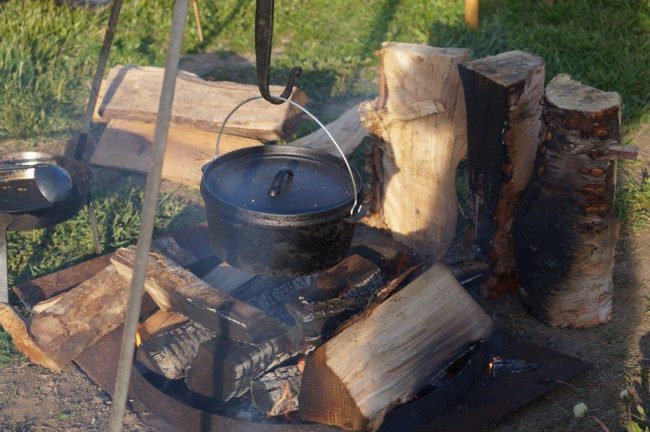
At midnight, by candlelight and at the request of the genteel Les Marchands of Parks Canada, I read from my book, Amazing Medical Stories (Goose Lane Editions, 2003). This was a special moment, for the body of the gentleman about whom I was reading lay buried in a crypt below my feet, here in the chapel of the fortress.
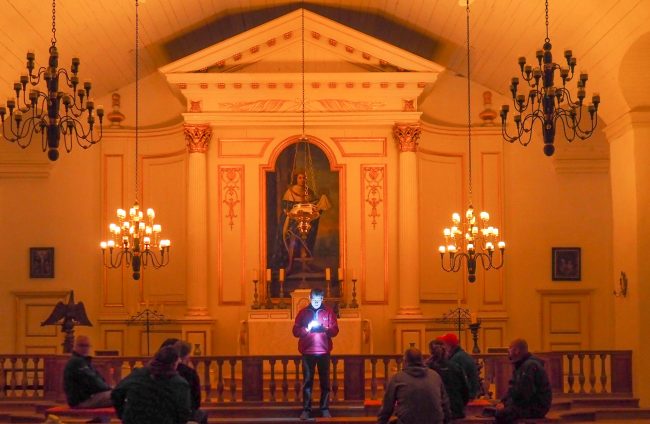
The author gives a midnight reading from his book, Amazing Medical Stories, chronicling the unfortunate Duke D’Anville, whose remains lie interred in a crypt directly below his feet.
The Duke d’Anville, the admiral of a fleet that seemed destined to destroy Boston, Philadelphia, and New York in 1746, had died ignominiously of a brain-tumor-induced stroke as his fleet sailed into Chebucto Harbour (now Halifax), Nova Scotia. The fleet—decimated by typhus and buffeted by storms—accomplished none of its lofty goals, and limped back to France, leaving the remains of its noble admiral interred here.
After the reading, I made an interesting proposal to my colleagues. When I had visited Transylvania on Halloween a few years ago, I had brought a “ghost busting” kit, complete with EMF (electro-magnetic field) detector and remote laser temperature sensor. You can read about my adventures there at Dracula’s Grave.
I had brought with me the same gear to the fortress, and proposed to do a survey of the opulent governor’s palace, lit only by the light of the full moon, which flooded the building on this cold and lonely night.
Surveying the barracks, kitchens and other parts of the fortress with my EMF detector earlier, I had found nothing of spectral interest and the same disappointment materialized until we entered the governor’s audience chamber.
Because of Governor Duquesnel’s severe dental problems, arthritis, and hardening of the arteries, he often held audiences from his bed. He was known to be ill-tempered and irascible, and who can blame him with so many medical issues. To soothe his swollen joints, he would often sit by the fireplace of his chamber. Later, when he died, his body lay in this very apartment.
Touring the late governor’s premises, our small party chose to sit at his council table as I explained the workings of the EMF detector and the quantum physics rationale for so-called residual hauntings. While I had read extensively on these theories, I still maintained a healthy sense of skepticism. But… sometimes things happen that we can’t explain.
Since space and time were proven to be curved by Albert Einstein, it is theorized that a past segment of time might rest adjacent to the present. In dark and quiet places, one might glimpse images of events long gone. I demonstrated this theory by twisting a (reproduction) 18th Century napkin, bringing distant parts in contact with one another, to illustrate my point.
After leaving the governor’s council chamber, we journeyed onwards, towards the eminent gentleman’s reception room. At first, all was quiet, but as I continued to scan the room, my EMF detector suddenly shrieked like a predator-startled herring gull in the direction of the fireplace and the 18th Century chair located adjacent to it.
I gave the EMF detector to our Parks Canada interpreter, Kyle, to see if this was a reproducible finding…and he elicited the same signals. We all noted that the room felt colder than natural, and a signal bounced off the chair by my temperature sensor revealed a 10 degree Fahrenheit differential from the rest of the room.
One theory is that paranormal phenomena manifest by drawing energy from the environment, hence dropping the ambient temperature. Of course, it could have just been a cold draft…
Our photographer, Gary Cralle, told us he was sensitive to these phenomena, and that his hair had stood on end as the sensor shrilled. Gary snapped some photos, after which we hurried from the room and took some time to digest the events that we had experienced.
But could this night’s experiences be reproduced?
Several days later I had a chance to find out, when I returned to the fortress… again at night. Once more I returned to Governor Duquesnel’s audience chamber and I approached his chair and fireplace. The EMF detector again shrilled, but with a strangely different intensity and location.
The test for EMF signals of natural vs. supernatural origin is that artificial sources are always virtually identical. Paranormal phenomena classically vary with time. I would have to say that the “governor” had passed the test.
But seriously, was there a paranormal presence?
I always maintain a healthy skepticism. Ghostbusting provides an interesting source of material for a journalist such as myself, but I am at a loss to explain these findings. Afterwards, I searched thoroughly, including the floor below, and could find no natural explanation for these signals.
I am told that a fully-equipped paranormal investigation team is scheduled to visit the fortress in a few weeks. I wonder what strange phenomena and will manifest…
Co-authored by George Burden and Stella van der Lugt
Photo Credits
Photos by Stella van der Lugt – All Rights Reserved
Photos five and nine by Gary Cralle – All Rights Reserved

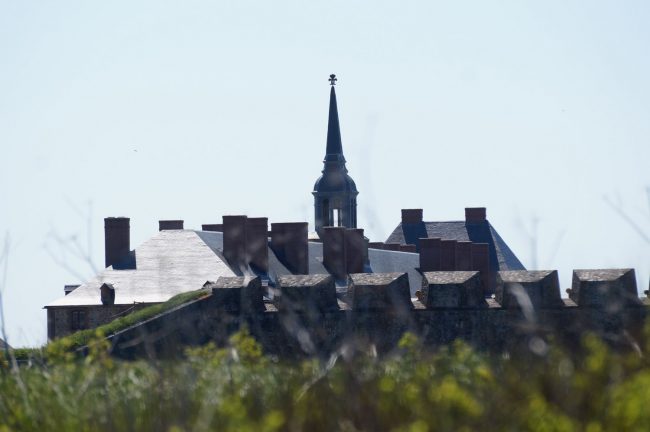






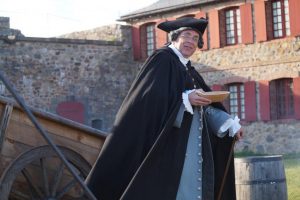

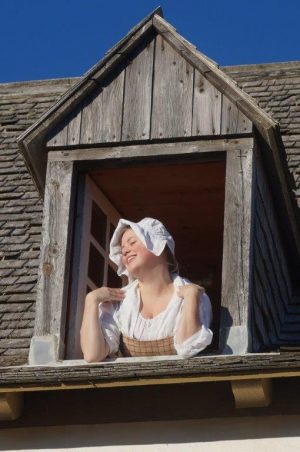
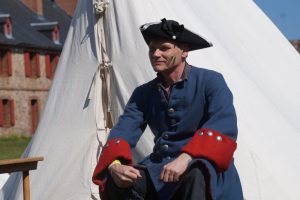

Yes it was the most unique of my many visits to Cape Breton!
Sounds intriguing. Do you have a direct link t this comment?